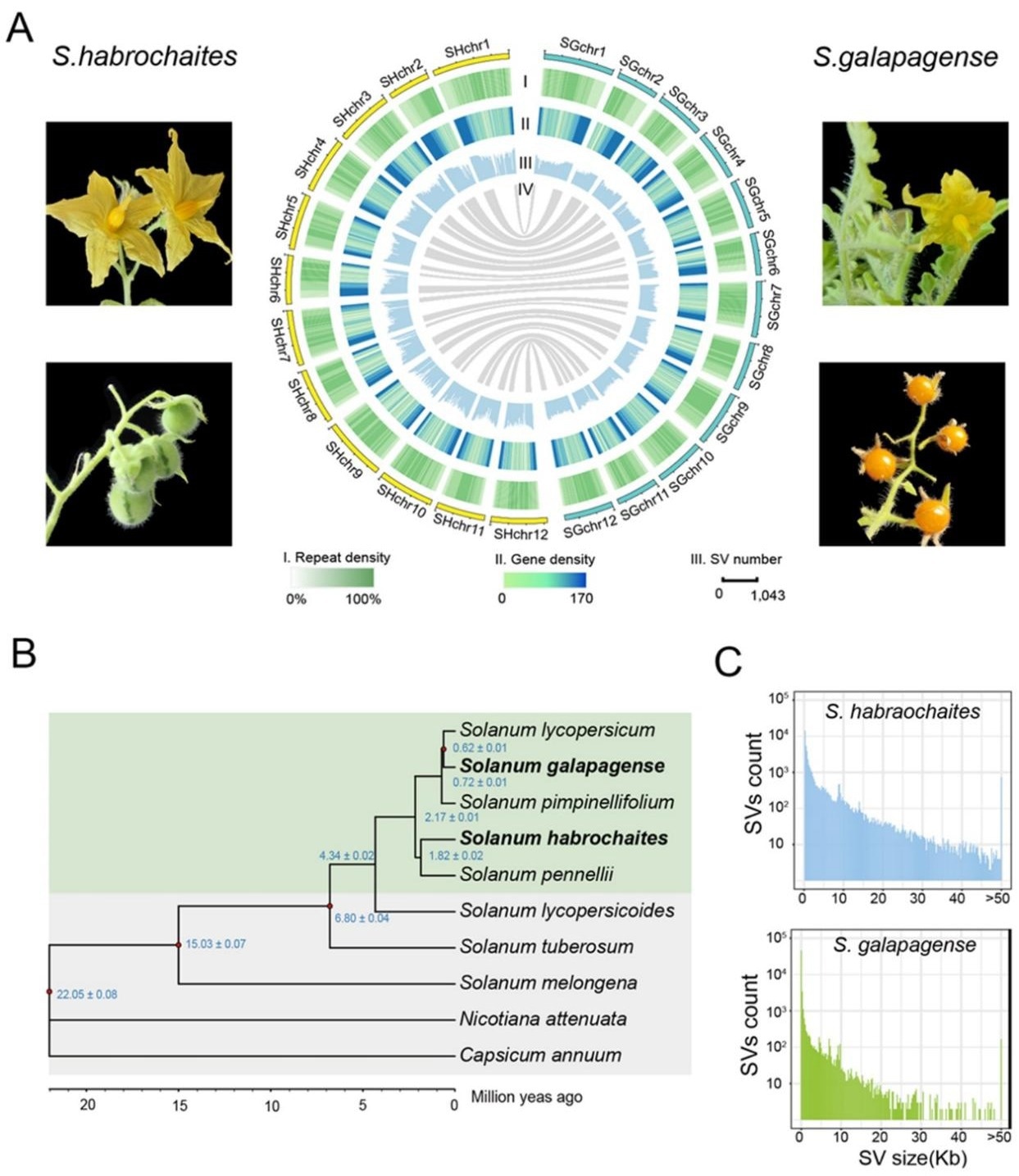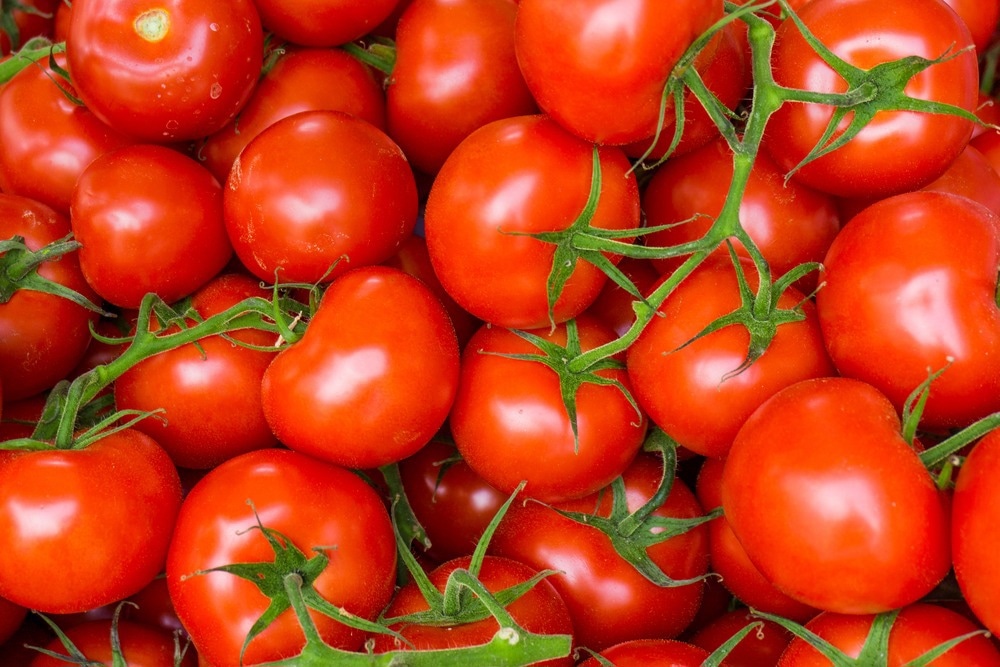Reviewed by Danielle Ellis, B.Sc.Sep 13 2022
The relatives of the wild tomato, Solanum habrochaites and S. galapagense, are crucial sources of germplasm in contemporary tomato breeding. They exhibit several advantageous properties when compared to the cultivated tomato, most notably a high resilience to biotic and abiotic stresses.
 Characteristics of the S. habrochaites and S. galapagense genomes: A. Genomic landscape of S. habrochaites and S. galapagense; B. Phylogeny of ten Solanaceae species with estimated divergence times; C. SV sizes and numbers of S. habrochaites and S. galapagense. Image Credit: XiaofenYu
Characteristics of the S. habrochaites and S. galapagense genomes: A. Genomic landscape of S. habrochaites and S. galapagense; B. Phylogeny of ten Solanaceae species with estimated divergence times; C. SV sizes and numbers of S. habrochaites and S. galapagense. Image Credit: XiaofenYu
However, the investigation of the genetics and molecular mechanisms underlying these features has been constrained by the scarcity of high-quality genomes.
By merging PacBio HiFi reads and Hi-C sequencing data, scientists from the Wuhan Botanical Garden of the Chinese Academy of Sciences, along with partners from Cornell University and Zhejiang University, have created the chromosome-scale reference genomes of the two species.
Using 3,011 single-copy orthologous genes, a phylogenetic tree for S. habrochaites, S. galapagense, and eight additional Solanaceae species was created. This tree showed that S. habrochaites was closely related to S. pennellii, while S. galapagense appeared to be related to S. lycopersicum.

Image Credit: Ewa Studio/Shutterstock.com
In S. habrochaites and S. galapagense, the comparative analysis identified 734 and 308 species-specific genes, respectively, that could contribute to the two species’ ability to tolerate stress.
There were 98,443 structural variants (SVs) between S. galapagense and S. lycopersicum and 336,319 SVs between S. habrochaites and S. lycopersicum. It was discovered that the inserted and enlarged areas in the genomes of S. habrochaites and S. galapagense contributed to their exceptional terpene production and tolerance to stresses like cold and infections.
Terpene synthase genes (TPSs) were thoroughly characterized, and an expansion of the TPS-a subfamily was seen in S. habrochaites, which likely contributed to the sesquiterpene synthesis that could be diversified or unique in this species.
919 RGAs unique to wild tomatoes were discovered after a genome-wide identification of resistance gene analogues (RGAs) in cultivated tomato and four wild tomato relatives, including S. habrochaites and S. galapagense.
These findings give tomato breeders new genetic resources for developing terpenoids and disease resistance.
Source:
Journal reference:
Yu, X., et al (2022). Chromosome-scale genome assemblies of wild tomato relatives Solanum habrochaites and Solanum galapagense reveal structural variants associated with stress tolerance and terpene biosynthesis. Horticulture Research. doi:10.1093/hr/uhac139